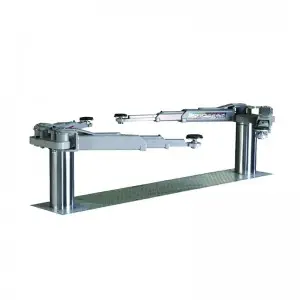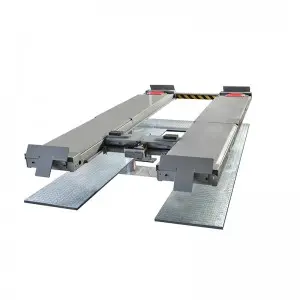[New Engery Vehicle Battery Lift]Revolutionizing Sustainable Transportation: The Role of New Energy Vehicle Battery Lift in Enhancing EV Efficiency and Battery Recovery

Revolutionizing Sustainable Transportation: The Role of New Energy Vehicle Battery Lift in Enhancing EV Efficiency and Battery Recovery
In recent years, the automotive industry has witnessed a significant shift towards sustainability, primarily driven by the increasing adoption of electric vehicles (EVs). With this transition comes the necessity to address the environmental impact of vehicle batteries, which can pose challenges once they reach the end of their life cycle. One innovative solution emerging in this landscape is the New Energy Vehicle Battery Lift, a technology designed to streamline battery replacement and maximize resource recovery. This article explores the benefits, technology, and implications of the New Energy Vehicle Battery Lift in promoting an eco-friendlier automotive sector.
Electric vehicles are a cornerstone of modern environmental initiatives. However, the batteries that power these vehicles—primarily lithium-ion batteries—face critical concerns related to disposal and recycling once they are no longer viable. Traditional EV battery replacement can be cumbersome, often requiring specialized tools, equipment, and skilled labor. This can deter some vehicle owners from seeking battery replacements, contributing to the environmental challenges posed by battery waste.
The New Energy Vehicle Battery Lift addresses these issues head-on. This innovative system simplifies and accelerates the process of battery removal and installation, making it easier for service technicians to manage battery replacements efficiently. Designed to support various EV models, the Battery Lift minimizes human effort and the time required for battery handling.
Essentially, the New Energy Vehicle Battery Lift functions as a specialized hoisting device capable of safely lifting heavy batteries. It features a series of adjustable platforms and support structures designed to accommodate different battery sizes and weights, ensuring that technicians can work with varying EV models without facing potential hazards or complications. This helps reduce the risk of injury while also preserving the structural integrity of the vehicle and its battery components during transitions.

Revolutionizing Sustainable Transportation: The Role of New Energy Vehicle Battery Lift in Enhancing EV Efficiency and Battery Recovery
One of the notable advantages of employing a New Energy Vehicle Battery Lift is its potential to alleviate the widespread issue of battery disposal. Many EV owners are hesitant to replace their batteries due to misconceptions about environmental impact, disposal costs, and the complexities involved in storage and recycling. By facilitating the battery replacement process, the Battery Lift encourages more drivers to consider the option of replacing their batteries rather than discarding their vehicles prematurely. As a result, this can lead to longer vehicle lifespans and reduced overall waste.

Revolutionizing Sustainable Transportation: The Role of New Energy Vehicle Battery Lift in Enhancing EV Efficiency and Battery Recovery
Moreover, battery recycling is crucial for mitigating the adverse effects of mining and processing raw materials for new batteries. The New Energy Vehicle Battery Lift plays a vital role in enabling efficient battery recycling by ensuring that old batteries undergo a smoother transition into recycling facilities. Facilitating the easy extraction of batteries means that they can quickly reach processors who specialize in recycling these components, allowing for the recovery of critical materials such as lithium, cobalt, and nickel. This is not only essential for preserving natural resources but also for reducing the environmental footprint associated with new battery production.
The advent of this innovative technology does not merely enhance operational efficiency; it also encourages a more sustainable approach to battery ownership. As safety protocols are adhered to and efficiency is maximized, consumers can feel more confident about their choices in electric mobility. This may potentially increase sales and ownership rates of electric vehicles, further driving down carbon emissions in the transportation sector.
Furthermore, as the industry progresses, the New Energy Vehicle Battery Lift can be integrated with advances in automation and robotics, leading to even more streamlined and efficient processes. Research into smart technology integration, such as IoT devices and AI-driven systems, can provide real-time information regarding battery health, lifecycle monitoring, and optimal replacement timing. This can empower consumers by offering insights into their vehicle’s performance and the most responsible course of action regarding battery management.
In conclusion, the New Energy Vehicle Battery Lift represents a significant advancement in the electric vehicle ecosystem, highlighting the importance of efficient battery replacement and responsible disposal methods. By addressing the practical challenges associated with battery replacement and recycling, this technology is poised to fundamentally shift perspectives on EV battery management and sustainability. As we continue our journey toward a greener future, innovations like the Battery Lift will play a critical role in ensuring that electric vehicles are not only popular but also responsible choices for consumers and the planet.Inground lift
